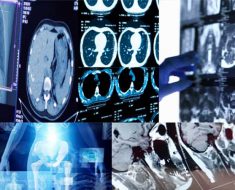Any disruption to the blood supply can damage the spinal cord and prevent it from communicating with the rest of the body.
The spine uses nerve impulses to communicate with different parts of the body. In severe cases of spinal stroke, the lack of communication can cause paralysis and may be life-threatening.
Unlike other strokes, spinal strokes do not typically disrupt the blood supply to the brain. However, they do have similar causes.
The majority of spinal strokes are ischemic, meaning that they result from blood clots in blood vessels.
Less commonly, bleeding from ruptured blood vessels can cause a spinal stroke. This type of stroke is called a hemorrhagic stroke.
Spinal strokes are rare, accounting for just 1.25 percent of all strokes. In this article, learn about the symptoms, causes, treatment, and recovery.
Symptoms

The symptoms of spinal strokes may vary from person to person depending on the location of the stroke in the spine. The severity of the damage will also influence the symptoms that a person experiences.
The primary symptom of a spinal stroke is sudden, extreme pain in the neck and back. Other symptoms can include:
- muscle spasms
- difficulty moving
- numbness
- incontinence, loss of bladder control
- tingling
- muscle weakness
- paralysis
- difficulty breathing
In severe cases, a spinal stroke can cause death.

Treatment for a spinal stroke will depend on the underlying cause. In cases of ischemic spinal stroke, a doctor will give the person medications to thin the blood and reduce the risk of blood clots. These are known as antiplatelet and anticoagulant drugs. They include common drugs, such as aspirin.
Medication may also be necessary to manage a person’s symptoms, as well as their risk factors for another stroke.
For example, for people with high blood pressure or high cholesterol, a doctor may prescribe medication to control these factors.
A person who has paralysis may benefit from occupational and physical therapy, which can make it possible to regain some range of motion.
If a person loses control of their bladder, they may need a urinary catheter.
Long-term complications
Spinal strokes can have severe, long-term complications, depending on the extent of the damage and the location of the stroke.
Complications of a spinal stroke can include:
- mobility problems
- paralysis
- incontinence
- sexual dysfunction
- muscle, joint, or nerve pain
- anxiety, depression, or post-traumatic stress disorder (PTSD)

It is possible to make a full recovery from a spinal stroke. The chances of making a full recovery depend on the cause and location of the stroke, the extent of the damage, the success of the treatment, and the individual’s overall health status.
However, many people will experience lasting complications after a spinal stroke and may require long-term treatment or have to implement lifestyle changes.
For most people, certain lifestyle changes are essential to reduce risk factors and improve the chances of a full recovery.
These could include:
- adopting a healthful, balanced diet
- exercising regularly
- stopping smoking
- reaching and maintaining a healthy weight
- reducing alcohol consumption
Outlook
Many people make a full recovery from a spinal stroke, but this can take months or even years.
Paralysis following a spinal stroke may last for a few weeks or may be permanent.
People can reach out to support groups and consider seeing a therapist to help their recovery and reduce stress.
Source: Read Full Article





